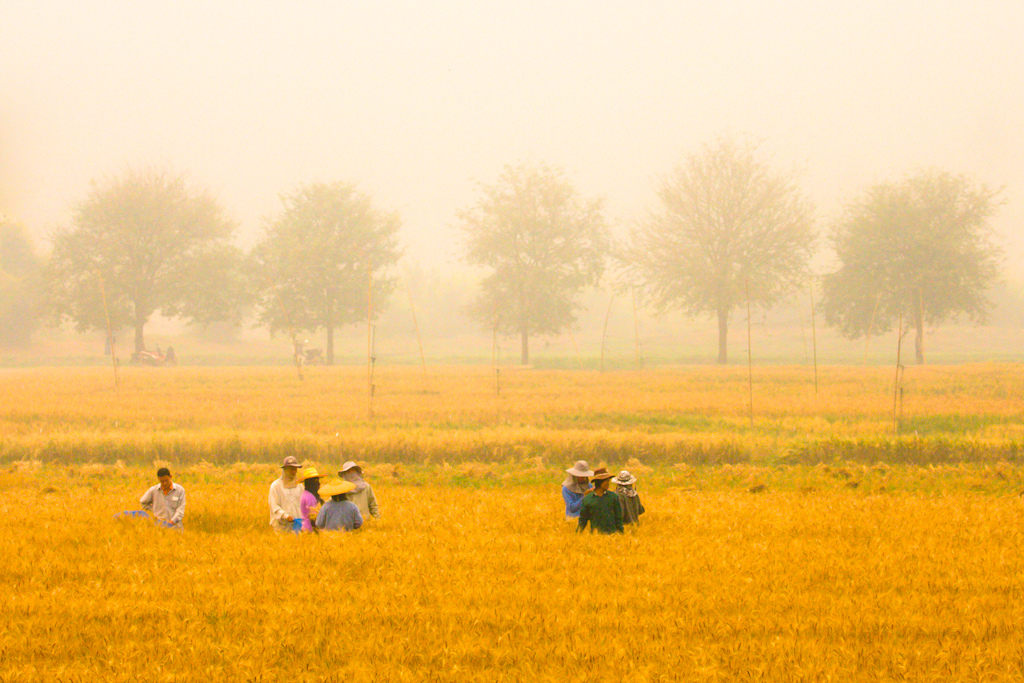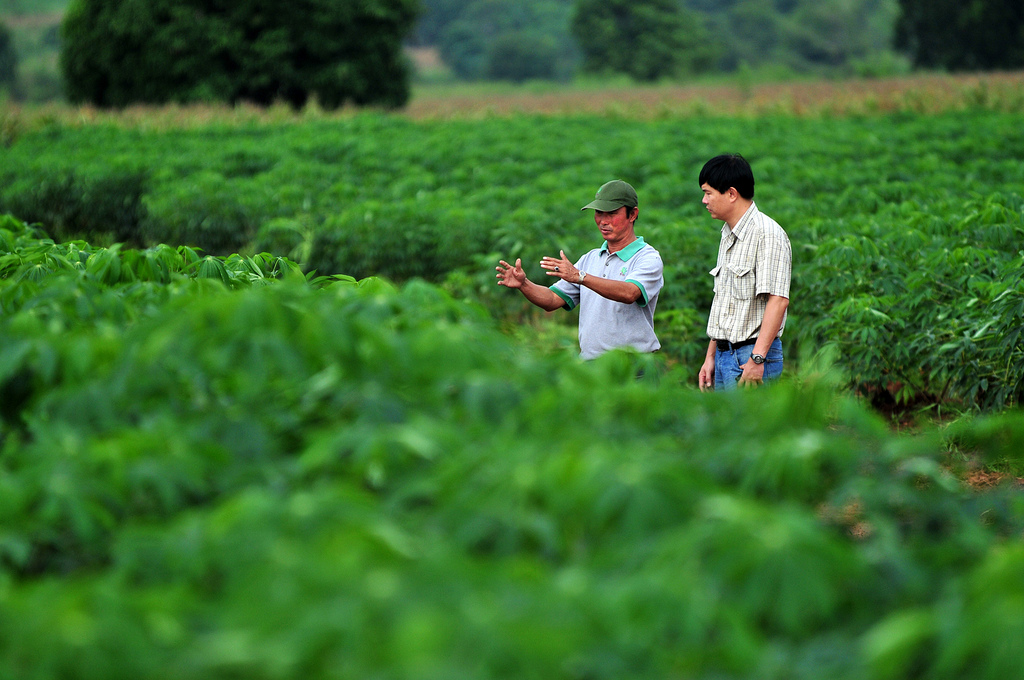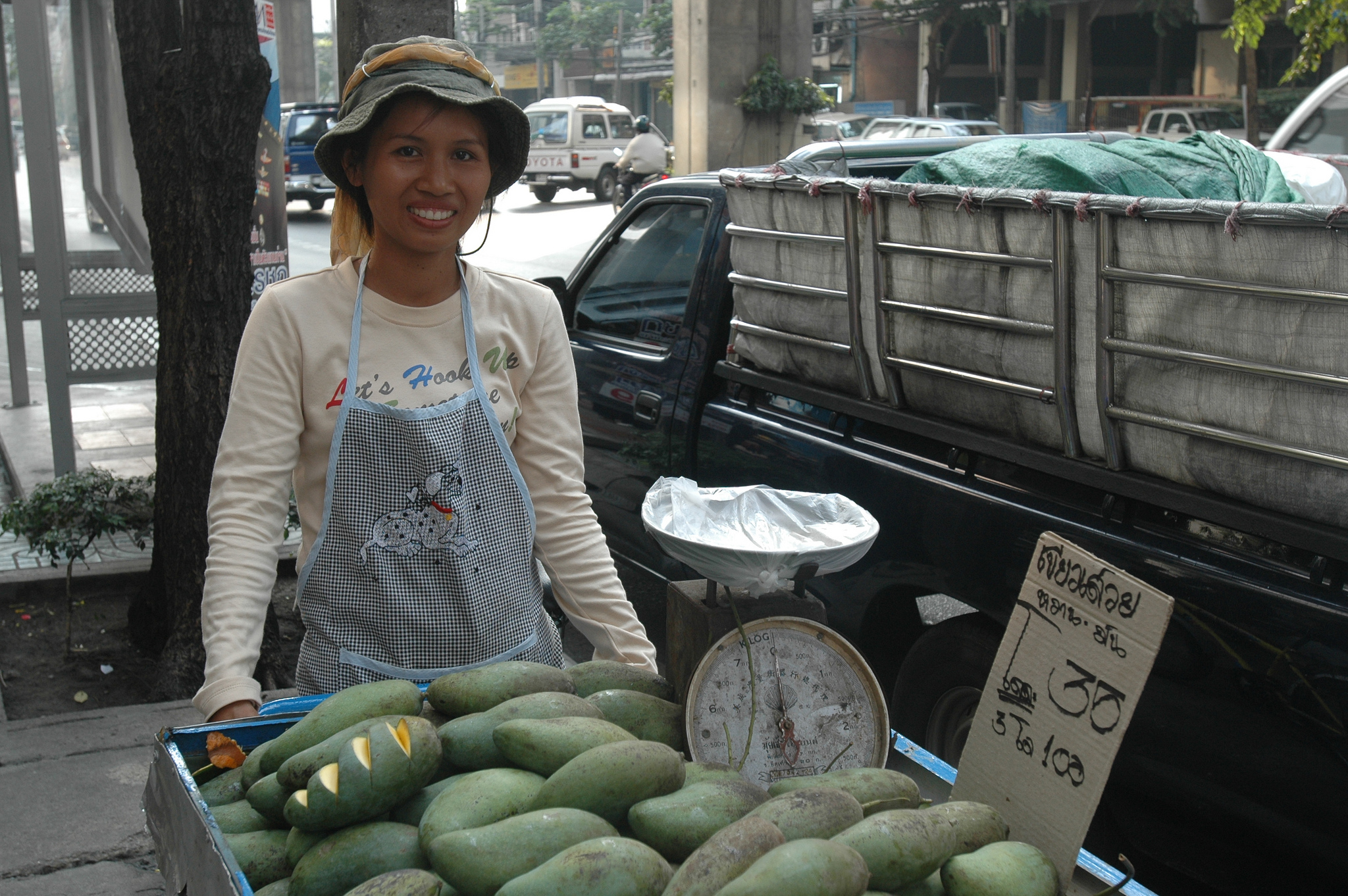Russian fertilizers could help improve Thai yields

Farmers in Pang Mapha, Thailand.
Flicrt/ Riccardo RomanoThe brand name of your company’s product is Dao Awakad, which means Space Star in English. Isn’t it somewhat strange to give a name like that to a product like fertilizer?
Not at all. The name we chose for our fertilizer is not accidental. It is in fact a product that has its origins in research conducted by Russian scientists on board Soyuz space stations in the 1970s.
A part of their experiments was related to growing plants in the zero gravity conditions of outer space. The greatest challenge was to find a suitable substance, or a substrate in which to grow plants. This substrate needed to be able to hold water and nutrients so that they would be always available to the plants and not float around the laboratory because of zero gravity. You can clearly imagine that this is exactly what would have happened if ordinary soil was used for this purpose.
What is this magic substance, which can do all those things? Is it some synthesized high-tech solution?
The answer turned out to be quite simple and it was found right here on Earth in the form of a natural mineral called Clinoptilolite. It is a crystalline alumino-silicate of the zeolite family that can be found in old volcanic rock deposits in several places in the world, including Russia.
This natural mineral has two unique properties. Due to its honeycomb structure with a myriad of channels and pores inside, it has amazing adsorption capabilities. In addition to this the Clinoptilolite molecule was found to have a natural negative charge, which allows it to attract positively charged particles (ions), much like a magnet, and keep them inside its vast porous structure for as long as needed.
 Checking cassava plantations for signs of pests and diseases, near Khorat, eastern Thailand. Source: Flicrt/ CIAT
Checking cassava plantations for signs of pests and diseases, near Khorat, eastern Thailand. Source: Flicrt/ CIAT
Under certain conditions, however, the mineral can release these ions or exchange them for others. This process is called ion-exchange. So having these two unique properties: adsorption and ion-exchange capacity, Clinoptilolite is able to suck up valuable nutrients, especially nitrogen which is vital for plant growth, and water like a sponge and later on release them to feed the plants.
But how does the mineral know when to release the nutrients to the plant?
When the plant is “hungry” its roots will release an acidic fluid (much like human beings: when we are hungry our stomach will produce acidic fluid to help digest our food). When in contact with Clinoptilolite it will trigger an ion-exchange reaction whereby the mineral will release the nutrients it is holding inside its structure in the amount that corresponds to the amount of acidic fluid released. So the plant will get the exact amount of nutrients it needs, no more, no less. The remaining nutrients will stay in the mineral for future use. So basically this is the essence of the “space” technology that can be used to produce so-called “controlled release” fertilizer.
It all sounds very good in theory. But what about in practice? Do you have any test results to prove the superiority of your product?
Of course. Since the start of production less than 3 years ago we have conducted several trials for different types of plants to demonstrate the efficiency of our fertilizer. We have recently completed a 2-year trial on a plot within the rubber tree plantation of Thai Hua Rubber PLC, one of the largest rubber producers in Thailand. The results were very impressive. The fertilizer costs were reduced by 20 percent and we recorded an average over 10 percent increase in the yield (both in terms of weight and dry rubber content (DRC). So the total economic benefit came to more than 30 percent. And I would like to stress here once again that due to the soil conditioning effect of the Clinoptilolite, the long-term benefit will be even higher in the future.
 A Thai farmer sells her mangoes in Bangkok's streets. Source: Flicrt/ ILO in Asia and the Pacific
A Thai farmer sells her mangoes in Bangkok's streets. Source: Flicrt/ ILO in Asia and the Pacific
Trials with similar results were conducted with rice and vegetables. And we are currently completing another trial at a sugar cane plantation in Petchabun province. Although we are still awaiting the exact figures, which will be available after harvesting at the end of this month, we can already see for sure that the results will be positive.
Another major trial for durian was recently started at the provincial fruit research center in Chanthaburi.
Preliminary results that came out are already encouraging.
You must be selling thousands of tons per month…
Unfortunately, not quite yet. Our sales are growing but at a very slow pace. There are several reasons for this. First of all, most Thai farmers are generally quite conservative. Once they are used to some brand or formula of fertilizer it is very difficult to convince them to change. Especially since our fertilizer uses a low chemical formula, they may think that there are not enough nutrients for effective plant growth compared to traditional 16-16-16 formula. So it takes a lot of time and effort to explain to them about the special features of our controlled release fertilizer. But our experience shows that if we can convince them to try it once, they usually become our loyal clients.
Another serious problem is the current unfavorable situation in agriculture in general with prices for most agricultural commodities such as rubber and palm as well as rice at their lowest. Many rubber plantations, for instance, have stopped using fertilizer completely due to low market prices for their product. Most small farmers are in heavy debt and cannot afford to buy fertilizer. In this situation only the biggest fertilizer producers have the advantage, since they can afford to give them long-term credit.
But we are still positive that one day the obvious advantages of our product will be noticed and eventually it will find its way into the broad market.
The current Thai government has initiated many projects to assist farmers. Have you ever tried to contact any government agency like the Bank for Agriculture and Agricultural Cooperatives (BAAC) to explain the merits of your product?
As you may imagine, it is not that easy. We tried to talk to the BAAC, but did not get any support from them. We are currently talking to the local administration of Rayong province, where our factory is situated, about a provincial scale project that could use our fertilizer. The initial response is positive, but there are still many steps to be taken before it can materialize.
Read more:
Partner generated content
All rights reserved by Rossiyskaya Gazeta.
Subscribe
to our newsletter!
Get the week's best stories straight to your inbox

